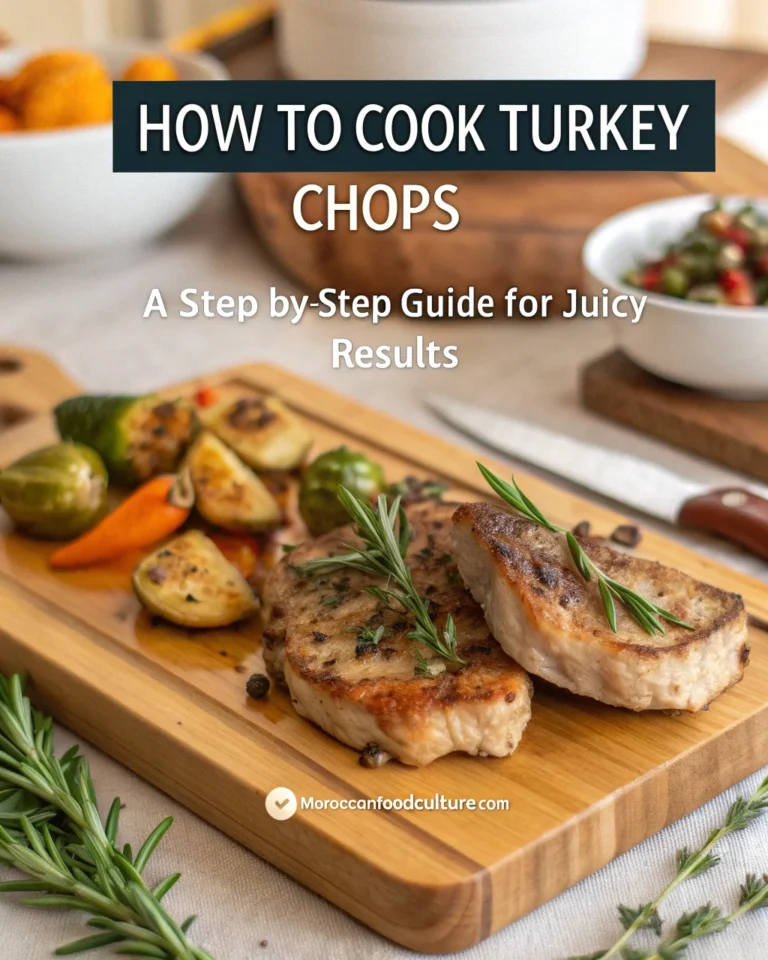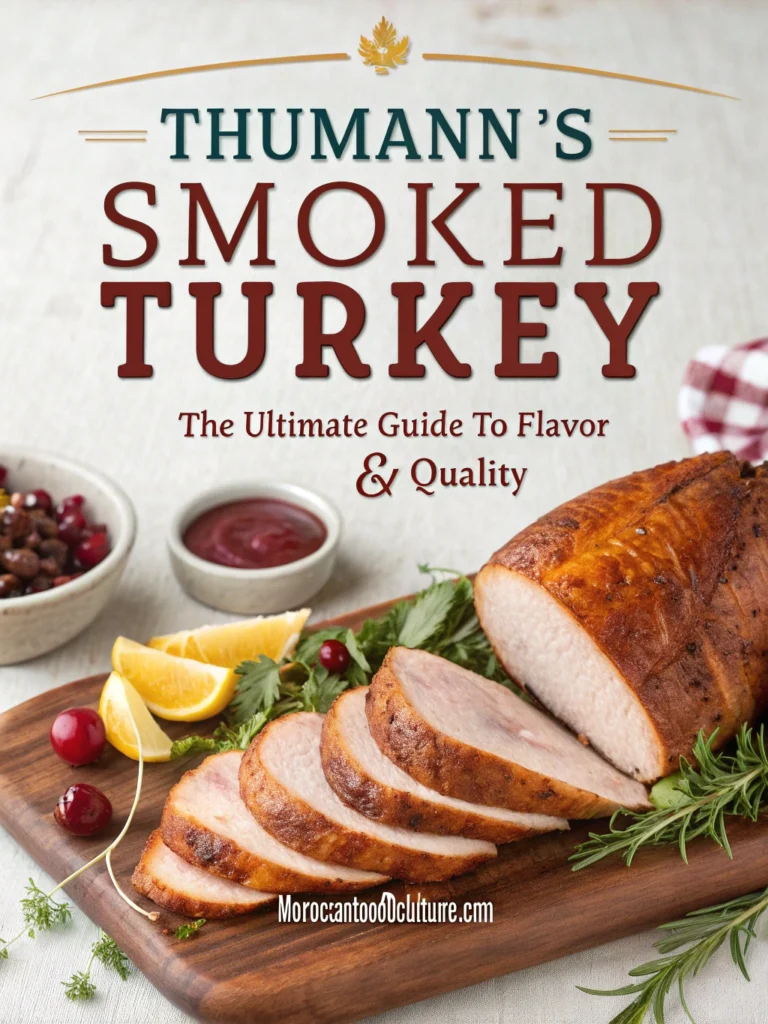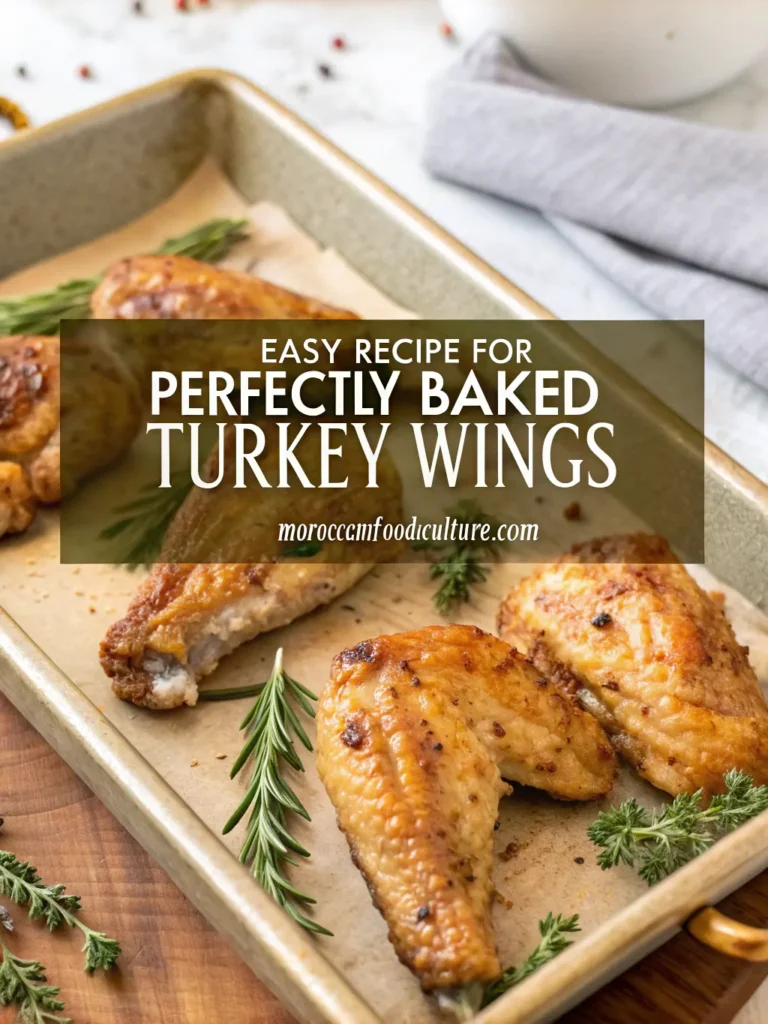How to Cook Perfect Turkey Ham: A Complete Guide to Delicious Results Every Time
Remember that Sunday dinner at grandma’s house? The mouthwatering aroma of turkey ham wafting through the kitchen, promising a meal that would bring the whole family together. There’s something deeply comforting about a perfectly cooked turkey ham – juicy on the inside, beautifully glazed on the outside, and filled with flavor that creates lasting memories around the dinner table. Whether you’re a seasoned cook looking to perfect your technique or a beginner attempting your first turkey ham, this guide will help you master this versatile protein that balances healthiness with indulgent taste.
Table of Contents
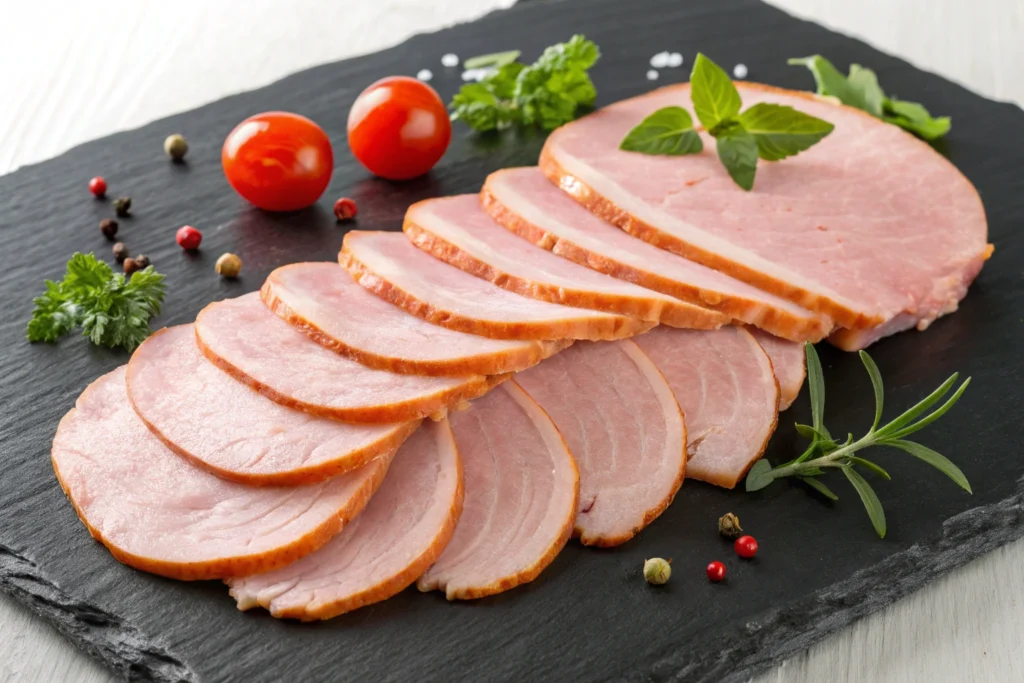
What Is Turkey Ham?
Understanding the Basics
Turkey ham represents a clever culinary innovation – a processed meat product crafted from turkey thigh meat, carefully cured and smoked to mimic the beloved flavor and appearance of traditional pork ham. This alternative offers a leaner option while delivering that familiar, savory taste experience you crave.
Unlike regular ham, turkey ham undergoes a specific processing method where manufacturers season turkey meat with a distinctive blend of salt, sugar, and various spices. The meat then experiences smoking or curing to develop that characteristic ham-like profile. The result? A protein option that satisfies your ham cravings while potentially aligning better with your dietary preferences.
Nutritional Benefits
Choosing turkey ham brings several nutritional advantages to your dinner table:
- Significantly lower fat content compared to traditional pork ham (approximately 50% less)
- Higher protein concentration to support muscle maintenance and growth
- Rich source of essential B vitamins, particularly niacin and B12
- Contains valuable minerals including selenium and phosphorus
- Generally fewer calories per serving than conventional ham options
For health-conscious individuals seeking to reduce red meat consumption without sacrificing flavor, turkey ham presents an ideal compromise between nutritional goals and enjoyable eating experiences.
Types of Turkey Ham Available
When shopping for turkey ham, you’ll encounter several varieties worth considering:
- Whole turkey ham: Perfect for family gatherings or when planning for leftovers
- Sliced turkey ham: Convenient for sandwiches and quick meals
- Spiral-cut turkey ham: Pre-sliced in a continuous spiral pattern for elegant presentation
- Organic options: Produced from turkeys raised without antibiotics or hormones
- Nitrate-free varieties: Processed without potentially concerning preservatives
Each type serves different purposes in your culinary repertoire, so selecting the right variety depends on your specific meal plans, nutritional priorities, and serving context.
Selecting the Perfect Turkey Ham
What to Look For
Finding exceptional turkey ham requires attention to several key factors that influence your cooking results:
When examining potential purchases, carefully evaluate:
- Size and weight considerations: Choose based on your guest count, allowing approximately ½ pound per person for meals where turkey ham stars as the main attraction
- Fresh vs. pre-cooked options: Pre-cooked varieties save time but often sacrifice some flavor potential; fresh options require more preparation but offer superior taste customization
- Packaging integrity: Look for securely sealed packages without punctures or excessive liquid
- Color and appearance: Seek uniform coloring without gray areas or discoloration
- Ingredients list: Shorter ingredient lists typically indicate higher quality products with fewer additives
Taking time during selection significantly impacts your final results, making this preliminary step crucial to your turkey ham success story.
Where to Buy Quality Turkey Ham
Finding exceptional turkey ham depends largely on knowing where to look:
- Butcher shops: Often provide fresher options with expert advice on preparation methods
- Supermarkets: Offer convenience and variety, particularly national brands with consistent quality
- Online specialty meat retailers: Access to premium, hard-to-find varieties delivered to your door
- Farmer’s markets: Potential source for locally produced, artisanal turkey ham with unique flavor profiles
- Cost considerations: Prices typically range from $3-8 per pound, with specialty varieties commanding premium prices
For the best experience, establish a relationship with a knowledgeable butcher who can guide your selections based on your specific cooking plans and preferences.
Essential Equipment
Kitchen Tools You’ll Need
Preparing turkey ham requires specific equipment to ensure optimal results:
- Roasting pan with rack: Elevates the meat for even heat circulation while collecting valuable drippings
- Meat thermometer: The single most important tool for preventing over or undercooking
- Aluminum foil: Essential for controlling moisture and preventing over-browning
- Basting brush: Facilitates even glaze application for picture-perfect results
- Sharp carving knife: Makes clean cuts without tearing the meat fibers
- Cutting board with juice groove: Contains flavorful juices while providing a stable carving surface
Investing in quality versions of these essentials elevates your turkey ham outcomes significantly, particularly the meat thermometer, which eliminates guesswork from the cooking process.
Optional Equipment for Advanced Techniques
For those looking to refine their turkey ham expertise:
- Electric knife: Creates uniformly thin slices with minimal effort, particularly valuable for spiral presentations
- Flavor injector: Introduces moisture and complementary flavors directly into the meat
- Smoker: Adds authentic smoke flavor layers for enhanced complexity
- Slow cooker: Provides worry-free, consistent cooking while you attend to other preparations
While these tools aren’t strictly necessary, they expand your technical capabilities and can transform good turkey ham into exceptional culinary experiences.
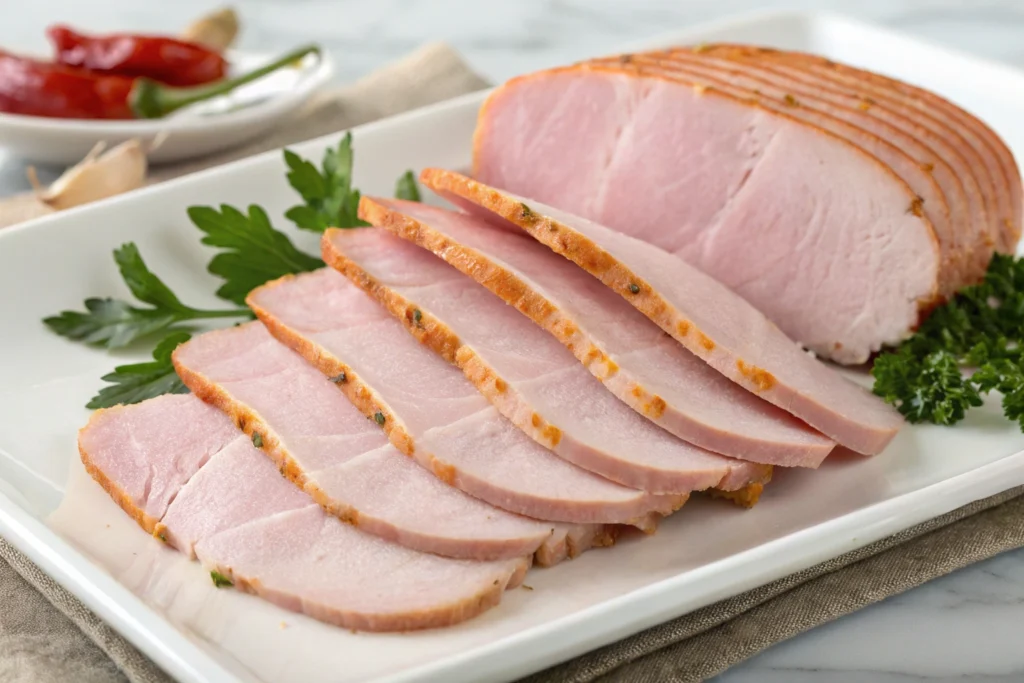
Preparation Methods
Thawing Turkey Ham Safely
Proper thawing forms the foundation of food safety when preparing turkey ham:
| Method | Time Required | Best Practices |
|---|---|---|
| Refrigerator | 24-48 hours | Maintain temperature at 40°F or below, place in container to catch potential drips |
| Cold Water | 30 minutes per pound | Submerge in cold water, changing water every half hour to maintain safety |
| Microwave | Varies by weight | Use defrost setting, cook immediately after thawing completes |
Never thaw turkey ham at room temperature, as this creates dangerous conditions where bacteria multiply rapidly. The refrigerator method, while requiring advance planning, consistently produces the most evenly thawed product with superior texture preservation.
Pre-Cooking Preparations
Before applying heat, properly prepare your turkey ham:
- Remove all packaging: Check carefully for small pieces of plastic or absorbent pads
- Rinse briefly and pat dry: Eliminates surface processing residues while preparing the surface for seasoning
- Trim excess fat if desired: Consider leaving some fat intact for flavor and moisture protection
- Score the surface: Create shallow diamond patterns (¼ inch deep) to enhance glaze penetration and create visual appeal
These preliminary steps create optimal conditions for flavor development and ensure even cooking throughout your turkey ham.
Mouthwatering Turkey Ham Recipes
Classic Baked Turkey Ham
This foundational recipe delivers reliable excellence with minimal complexity:
Ingredients
- 5-7 lb turkey ham
- 1 cup light brown sugar, lightly packed
- ¼ cup clover honey
- 2 tablespoons Dijon mustard
- 1 tablespoon apple cider vinegar
- ½ teaspoon ground cloves
Step-by-Step Instructions
- Preheat your oven to 325°F and position the rack in the lower third
- Score the ham’s surface in a diamond pattern approximately ¼ inch deep
- Combine the brown sugar, honey, mustard, vinegar, and cloves in a small saucepan over medium heat until just dissolved
- Place turkey ham on the rack in your roasting pan and brush half the glaze mixture evenly over the surface
- Cover tightly with foil and bake for approximately 1.5 hours (or 18 minutes per pound)
- Remove from oven, increase temperature to 375°F, apply remaining glaze generously
- Return to oven uncovered for 25-30 minutes until beautifully caramelized and internal temperature reaches 165°F
- Allow to rest for 15-20 minutes before carving to redistribute juices
This method balances moisture retention with delightful surface caramelization for a memorable centerpiece to any meal.
Slow Cooker Turkey Ham with Pineapple
When oven space is limited or you prefer hands-off preparation:
Ingredients
- 4-5 lb turkey ham
- 1 can (20 oz) pineapple rings with juice
- ½ cup dark brown sugar
- ¼ cup pure maple syrup
- 1 tablespoon Dijon mustard
- ½ teaspoon Ceylon cinnamon
Step-by-Step Instructions
- Place turkey ham in slow cooker, flat side down
- Arrange pineapple rings around and on top of the ham, reserving the juice
- Whisk together the reserved pineapple juice, brown sugar, maple syrup, mustard, and cinnamon
- Pour the glaze mixture evenly over the ham and pineapple
- Cover and cook on low setting for 6-7 hours until tender and internal temperature reaches 165°F
- If possible, baste occasionally to enhance flavor penetration
- Allow to rest for 10 minutes before transferring to a serving platter
This preparation infuses the turkey ham with tropical sweetness while the slow, gentle cooking ensures exceptional tenderness.
Air Fryer Turkey Ham Steaks
Perfect for smaller households or quick weeknight dinners:
Ingredients
- 4 turkey ham steaks (approximately 1-inch thick)
- 2 tablespoons extra virgin olive oil
- 1 tablespoon light brown sugar
- 1 teaspoon smoked Spanish paprika
- ½ teaspoon granulated garlic
- ¼ teaspoon freshly cracked black pepper
Step-by-Step Instructions
- Preheat air fryer to 380°F for 3 minutes
- Combine oil, sugar, and seasonings in a small bowl until well incorporated
- Brush mixture generously onto both sides of ham steaks
- Place steaks in air fryer basket, being careful not to overcrowd
- Cook for 5 minutes, then flip each steak
- Continue cooking for 3-4 additional minutes until edges begin to crisp and internal temperature reaches 145°F
- Rest for 2 minutes before serving
This method delivers delightfully crisp edges with juicy interiors in remarkably little time, perfect for busy weeknights when cravings strike.
Glazing Techniques
Classic Glazes for Turkey Ham
Glazes transform good turkey ham into memorable culinary experiences:
- Honey-Mustard Glaze: Equal parts honey and whole grain mustard with a splash of apple cider vinegar
- Brown Sugar and Bourbon Glaze: Brown sugar, bourbon, orange zest, and a pinch of cinnamon
- Maple-Apple Glaze: Reduced apple cider, pure maple syrup, and butter
- Orange Marmalade Glaze: Orange marmalade, soy sauce, grated ginger, and a touch of garlic
- Pineapple-Ginger Glaze: Crushed pineapple, brown sugar, freshly grated ginger, and lime juice
Each glaze creates distinctive flavor profiles while enhancing the turkey ham’s natural characteristics.
When and How to Apply Glaze
Mastering glaze application timing dramatically impacts your results:
- Initial glazing: Apply approximately one-third of your glaze before cooking begins
- Mid-cooking application: Add another third around halfway through the cooking process
- Final glazing: Reserve the remaining glaze for the last 20-30 minutes of cooking
- Multiple thin layers: Several thin applications develop more complex flavor than one thick coating
- Broiling technique: For exceptional caramelization, brush with final glaze and broil 6 inches from heat for 2-3 minutes, watching continuously to prevent burning
Keep glazes with high sugar content in reserve for later stages of cooking to prevent excessive darkening or bitter burnt flavors.
Serving and Presentation
Carving Your Turkey Ham
Proper carving technique showcases your culinary efforts:
- Allow proper resting time (15-20 minutes) to redistribute juices and firm the meat for cleaner slicing
- Position turkey ham on a stable cutting surface with the flattest side down
- Begin slicing perpendicular to the bone (if bone-in) using smooth, confident strokes
- Maintain consistent slice thickness – thinner (⅛ inch) for sandwiches, slightly thicker (¼ inch) for dinner plates
- Refresh your knife in warm water between cuts for the cleanest results
Taking time with proper carving elevates both presentation and eating experience significantly.
Perfect Side Dishes
Complement your turkey ham’s flavors with thoughtfully selected accompaniments:
- Root vegetable medley: Roasted carrots, parsnips, and sweet potatoes enhance the smoky notes
- Scalloped potatoes: Rich, creamy textures balance the ham’s savory profile
- Fresh green salad: Bright vinaigrette dressings cut through richness
- Homemade dinner rolls: Perfect for soaking up flavorful glazes
- Cranberry-orange relish: Tart, sweet counterpoints to the salty aspects of turkey ham
The ideal plate offers contrasting textures, complementary flavors, and visual appeal through diverse colors.
Plating for Visual Appeal
Create professional-looking presentations with these techniques:
- Arrange slices in a slightly overlapping fan pattern for elegant service
- Add height with carefully stacked portions for dramatic effect
- Incorporate fresh herb garnishes – rosemary sprigs, thyme leaves, or parsley
- Drizzle remaining glaze (heated if necessary) in artistic patterns around the plate
- Consider warm plates to maintain optimal serving temperature
Remember, we eat first with our eyes – thoughtful presentation elevates the entire dining experience.

Storage and Leftovers
Safe Storage Guidelines
Proper storage extends your turkey ham enjoyment safely:
| Storage Method | Maximum Time | Container Type |
|---|---|---|
| Refrigerator | 3-5 days | Airtight container or tightly wrapped |
| Freezer | 1-2 months | Heavy-duty freezer wrap or vacuum sealed |
For refrigerated storage, cool turkey ham completely before refrigerating to prevent condensation that accelerates spoilage. When freezing, wrap portions individually for convenient thawing of only what you need.
Creative Leftover Recipes
Transform yesterday’s turkey ham into exciting new meals:
- Turkey Ham Breakfast Hash: Combine diced turkey ham with potatoes, bell peppers, and onions, topped with a fried egg
- Monte Cristo Sandwiches: Layer turkey ham with Swiss cheese between bread slices, dip in egg batter, then pan-fry until golden
- Turkey Ham and Bean Soup: Simmer with white beans, carrots, celery, and herbs for a hearty meal
- Pasta Carbonara with Turkey Ham: Substitute for traditional pancetta in this classic Italian dish
- Turkey Ham Fried Rice: Stir-fry with day-old rice, peas, carrots, and scrambled eggs for a quick meal
These transformative options prevent “leftover fatigue” while maximizing your initial cooking investment.
Troubleshooting Common Issues
Dry Turkey Ham
When moisture becomes an issue:
Causes: Excessive cooking time, high temperature, poor-quality meat with insufficient marbling
Solutions:
- Monitor internal temperature carefully, removing from heat at 160°F as temperature continues rising during rest period
- Consider brining before cooking (1 cup salt and ½ cup sugar to 1 gallon water for 24 hours)
- Cook with liquid in the pan to create a humid environment
- Tent with foil during most of the cooking process
Remember, once moisture leaves the meat, it cannot be restored – prevention remains your best strategy.
Too Salty
When salt overwhelms other flavors:
Causes: Pre-seasoned ham with high sodium content, insufficient rinsing after purchase
Solutions:
- Soak in cold water for 1-2 hours before cooking to draw out excess salt
- Balance with sweet glazes containing honey, maple syrup, or brown sugar
- Serve with naturally sweet side dishes to counterbalance saltiness
- When purchasing, look for “reduced sodium” options if salt sensitivity is a concern
The perfect turkey ham balances salt with sweet, savory, and aromatic elements for complex flavor development.
Tough Texture
When your turkey ham lacks tenderness:
Causes: Overcooking, poor-quality meat, improper thawing
Solutions:
- Embrace slow cooking methods with gentle heat
- Consider moisture-retaining cooking techniques like braising
- Allow proper resting time before slicing
- Slice against the grain to mechanically shorten muscle fibers for perceived tenderness
Tenderness represents the final frontier in perfect turkey ham – worth mastering through careful technique and attention to detail.
Frequently Asked Questions
What is the ideal internal temperature for turkey ham?
Turkey ham reaches safe consumption at an internal temperature of 165°F (74°C). Insert your meat thermometer into the thickest section, avoiding contact with bone or pan for accurate readings. This temperature ensures harmful bacteria elimination while maintaining optimal moisture levels.
How long should I cook turkey ham per pound?
For pre-cooked turkey ham, allow 15-20 minutes per pound at 325°F until reaching proper internal temperature. Raw turkey ham requires 20-25 minutes per pound until reaching 165°F. Remember, these guidelines serve as starting points – your specific oven’s characteristics may necessitate adjustments.
Can I cook turkey ham from frozen?
While technically possible, cooking turkey ham from frozen remains suboptimal. Frozen cooking typically results in uneven heat distribution, with outer portions potentially overcooking before inner sections reach safe temperatures. For best results, thaw completely using safe methods before cooking.
What’s the difference between turkey ham and regular ham?
Turkey ham consists of processed turkey thigh meat, cured and smoked to resemble traditional pork ham. It typically contains 50-60% less fat, fewer calories, and different texture characteristics than pork ham. The flavor profile, while similar, offers subtle differences discernible to experienced palates.
How do I keep my turkey ham moist during cooking?
Maintain moisture by cooking covered for approximately 75% of total cooking time, applying generous glaze throughout the process, avoiding temperature exceeding 325°F during main cooking, using a meat thermometer to prevent overcooking, and allowing proper resting time before carving.
Can I smoke a turkey ham?
Absolutely! Turkey ham responds beautifully to smoking techniques. Use a smoker maintained at 250°F with fruit woods like apple or cherry for complementary flavor profiles. Smoke until reaching an internal temperature of 165°F, typically requiring 2-3 hours depending on size. This method adds remarkable depth to the flavor experience.
Conclusion
Mastering turkey ham preparation opens a world of culinary possibilities for family gatherings, holiday celebrations, and satisfying everyday meals. Through understanding proper selection criteria, preparation fundamentals, cooking techniques, and serving methods outlined in this guide, you’ll consistently create turkey ham dishes that deliver on both flavor and nutrition.
The versatility of this protein option extends from elegant holiday centerpieces to quick weeknight solutions, all while offering healthier alternatives to traditional pork options. As you experiment with different glazes, cooking methods, and serving styles, you’ll develop signature approaches that reflect your personal taste preferences and cooking style.
Remember that cooking represents a journey rather than a destination – each turkey ham preparation builds your expertise and intuition for future culinary successes. We’d love to hear about your turkey ham triumphs! Share your experiences, modifications, and serving suggestions in the comments below, or tag us in your social media posts showcasing your turkey ham masterpieces. Happy cooking!
Have you given our recipe a try?
There are no reviews yet. Be the first one to write one.


